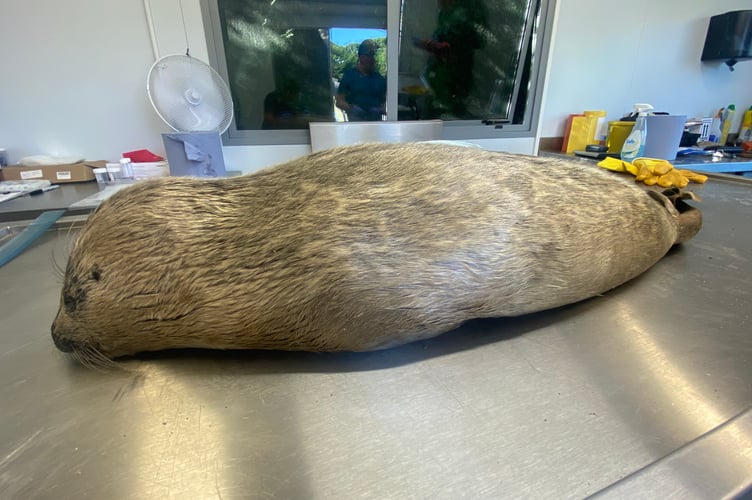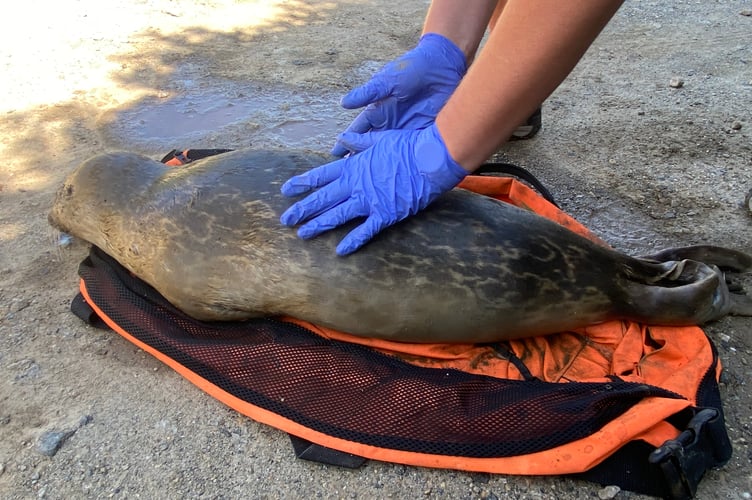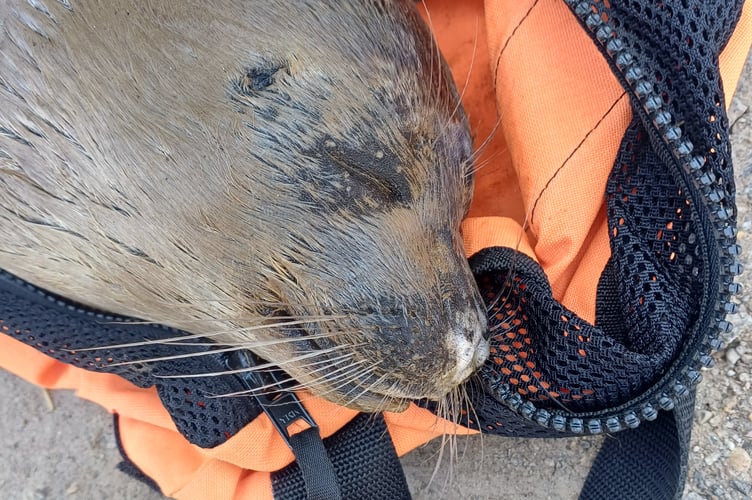The Cornish Seal Sanctuary (CSS) were informed of a small seal hauled out in a public place in Hayle estuary last month.
As it was a somewhat unusual spot for a seal to be, the information was passed to British Divers Marine Life Rescue (BDMLR) who sent a volunteer Marine Mammal Medic to check on it.
From a visual assessment the animal looked healthy and alert and was fortunately in a location where disturbance from people and dogs would be relatively low. It was also noted initially that this appeared to be a common seal, which despite the name is actually rare in south west England.
The animal was monitored in situ without intervention and photos passed back to the BDMLR, CSS and Seal Research Trust (SRT) teams. It was upon reviewing these images that curiosity arose around the identity of the species, as a few physical features appeared different. Upon consulting with colleagues in Europe, it was able to be confirmed that this was in fact a ringed seal, a species normally found in the Arctic and Baltic seas and never before recorded in Cornwall.

Over the following days there were a couple more reports of the seal around the estuary in different places and again observed discreetly by BDMLR. However, on Sunday morning the alarm was raised by Medics who saw it enter a sudden violent seizure that very sadly resulted in its death.
The body was recovered and taken for a post mortem examination with Cornwall Marine Pathology Team, assisted by an Arctic seal researcher from the University of Exeter. The female seal weighed 20.2kg, and her nose to tail length of 85cm would suggest she was around one year of age when compared with information in scientific literature.
It was noted that she was in good nutritional condition and had fed relatively recently. There was evidence of liver pathology and gastric ulceration on gross examination and swabs and tissue samples were collected for bacteriology and histopathology to further ascertain the cause of death. Samples were also collected for stable isotope analysis, ageing, genetics, toxicology and virology.
There has only ever been one other record of this species in the south west which was in Plymouth in 2016. The last known record of a ringed seal in the UK was an individual rescued near Aberdeen in 2021.

As an Arctic species ringed seals, so named because of the patterns on their fur, range across the northern coasts of Canada, Alaska, Greenland, Russia and Norway, as well as having a population in the Baltic Sea. Occasional wandering vagrant animals are known to come further south outside their usual habitat, with individuals reported as far south as California and Portugal.
They are one of the smallest of all seal species in the world, growing up to 1.6m long and 110kg at adult size, with pups born at around 5kg. This is around half the size of the grey seal pups that are a more familiar sight in this region.
SRT’s network of volunteers have routinely recorded wild seals around the south west region for 25 years and research data shows climate change is already impacting native species in multiple and shocking ways. Arctic species are likely worst affected though, as they lose their sea ice habitat, forcing them south in an attempt to survive.
The Environmental Records Centre for Cornwall and the Isles of Scilly collects reports of all terrestrial and marine species in a central database for the region, and is administered by Cornwall Wildlife Trust (CWT). Data on live and dead marine mammals is reported in by members of the public and regularly surveyed by CWT’s network of trained citizen science volunteers.

This helps track the distribution of marine life over time, evidencing change in numbers and seasonal timing of species in the county’s coastal seas. CWT also collects reports of marine wildlife disturbance via the Cornwall Marine and Coastal Code Group, which is a multi-stakeholder coalition that works to raise awareness of and monitor wildlife disturbance issues around the region.
If wildlife disturbance is witnessed then advice can be sought from, and a report made to, the CMCCG hotline on 0345 201 2626. Like all youngsters, what this seal needed was space to rest. DEFRA’s marine and coastal wildlife code, available free online, shows people can put marine animals first.
Disturbance from human activity is a real issue for marine wildlife species, whether it be coast walkers and dogs directly interacting with them, kayaks and paddleboards approaching too closely, or noise from boats, drones and even aircraft. These incidents are frequent, detrimental and cumulatively increase the stress that vulnerable animals like seals experience especially when resting on land.
This is why the presence of the ringed seal was not announced at the time of its discovery, to help protect it. Very few people seeing it would have realised what they were looking at nor understood the incredible journey it may have been on, thus giving it space and time to recover was the priority during the monitoring effort by BDMLR.

It has been just three years since the first record of a walrus in Cornwall, the infamous Wally who spent some of that summer at the Isles of Scilly, and so this ringed seal represents another very important addition to this region’s marine natural history record. While Wally’s story is widely known, the quiet arrival and departure of this tiny yet just as enigmatic creature should also be told, but not just through a written article.
Following the post mortem examination, the body of the ringed seal was donated as an educational resource to the natural history collection of Grampus Campus. The group was founded as an educational facility to highlight what species are present in this region and facts about their threats and conservation efforts.
All of the specimens used in the displays are sourced ethically from around Cornwall, and over the next couple of years this ringed seal’s skeleton will go through several stages of preparation to get it to a point where it will be clean enough to articulate ready to join the mobile exhibition and one day, a permanent museum for everyone to see.
Together, the groups have ensured that this seal’s short life and important story can continue to be seen and heard for future generations to learn from, and not be forgotten.



_021_(MP2_4167).jpg?width=209&height=140&crop=209:145,smart&quality=75)
